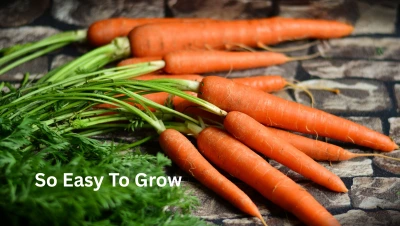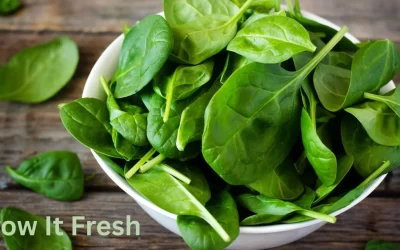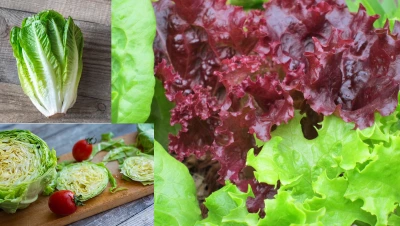Learning how to grow carrots is one of the most rewarding things you can do in your garden. Their vibrant orange color, sweet flavor, and versatility in the kitchen make them a favorite for many gardeners. Whether you are a novice or an experienced gardener, cultivating carrots can be both fun and easy if you follow a few simple steps. Here’s a beginner’s guide to growing carrots, from planting to harvesting.
Table of Contents
1. Choosing the Right Variety
Carrots come in a variety of shapes, sizes, and colors. While orange carrots are the most common, they also come in purple, yellow, white, and red varieties. The type of carrot you grow will depend on your taste preferences and growing conditions. Some common varieties include:
- Danvers: A classic orange variety with good storage potential.
- Nantes: Known for its sweet flavor and tender texture.
- Purple Haze: A colorful variety that has a striking purple skin and orange interior.
- Chantenay: A shorter, stump-rooted variety ideal for heavy or clay soil.
If you’re learning how to grow carrots, start with an easy-to-grow variety like Nantes or Danvers.
2. Preparing the Soil
Carrots thrive in well-drained, loose soil that is free of rocks and debris. The soil should be light, sandy, and slightly acidic with a pH of 6.0 to 6.8. Heavy clay soil can make it difficult for carrots to grow properly, resulting in stunted or misshapen roots.
Before planting, work the soil to a depth of at least 12 inches. You can use a garden fork or spade to loosen the soil. Adding organic compost will improve soil texture and fertility. Avoid using too much fertilizer, as carrots don’t require heavy feeding. Excessive nitrogen can result in lush, leafy growth at the expense of root development.
3. Planting Carrots
Carrot seeds are tiny, so planting them can be a little tricky. Start by choosing a sunny spot that gets at least 6 hours of sunlight per day. You can plant carrots directly in the garden bed or in containers with deep, loose soil.
- For a spring harvest, plant seeds 2-3 weeks before the last frost date in your area.
- For a fall harvest, plant 10-12 weeks before the first frost date in your area.
- Spacing: To grow carrots, you will need enough space for them to grow properly, so thin the seeds. Sow seeds about 1/4 inch deep, spacing them 2-3 inches apart. You can always thin them further once they start to germinate.
- Row Layout: Plant your seeds in rows, with about 12 inches between rows to allow for easy access and air circulation.
- You can also use the square-foot gardening method to grow carrots. Again, be sure to thin them down for proper spacing.
- Watering: Keep the soil consistently moist until the seeds germinate, which usually takes 10-14 days. Be sure not to let the soil dry out completely during this period.
If you’re attempting to grow carrots in rows, you can use a light mulch to keep the soil moist and reduce weed competition.
4. Care and Maintenance
Once your carrot seedlings are established, they require minimal care. However, there are a few things to keep in mind to ensure they thrive:
- Thinning: Once your seedlings have reached a height of about 2 inches, thin them to 3-4 inches apart. Crowded carrots will compete for nutrients and may result in smaller roots.
- Watering: Carrots need consistent moisture to grow properly. Aim to water deeply once a week, especially during dry spells. Shallow watering can lead to weak roots.
- Weeding: Keep the bed free of weeds, as they can compete with your carrots for water and nutrients. Use a hoe or hand weeder to remove weeds, but be careful not to disturb the delicate carrot roots.
- Mulching: Applying a layer of mulch can help to grow carrots by conserving moisture, regulating soil temperature, and preventing weeds from growing.
5. Harvesting Carrots
You can grow carrots in 70 to 80 days, depending on the variety. You can begin harvesting them when they reach a size that suits you, but for the sweetest flavor, it’s best to wait until they are fully mature. If you’re unsure whether your carrots are ready, gently pull one from the ground and check its size.
Carrots can be harvested by hand or with a garden fork. When harvesting, be sure to loosen the soil gently to avoid breaking the root. If you’re growing larger varieties, use a fork to dig carefully around the carrot, then pull it out of the ground.
6. Storing Carrots
Freshly harvested carrots can last for several weeks if stored properly. After harvesting, cut off the green tops to prevent them from drawing moisture out of the roots. Store the carrots in a cool, dry place, ideally in the refrigerator. For long-term storage, you can also preserve carrots by canning or freezing them.
Conclusion
Learning to grow carrots is a simple and satisfying process that yields delicious results. With just a little planning, care, and patience, you can grow carrots and have a bountiful harvest of sweet, crunchy treats right in your backyard. Whether you enjoy them raw, roasted, or as part of your favorite recipes, homegrown carrots are sure to enhance your meals and provide a sense of pride in your gardening success. There is nothing quite like learning how easy and maintenance-free it is to grow carrots in spring and fall gardens.





0 Comments